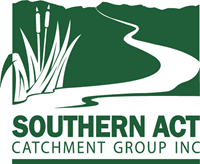The 31 hectare heritage listed Tuggeranong Homestead site includes two paddocks which have a large number of mature and healthy Yellow box (Eucalyptus melliodora) and Redgum (E. blakelyi) trees present. This project will conserve and enhance this small area of the nationally endangered ecological community. The main issue associated with this site is the degraded nature of the understorey as a result of weed invasion and loss of understorey species. Weed control and selective planting of shrub, forb and grass seedlings propagated from local species from this type of community will eventually assist the return of this site to a viable population of associated woodland plants.
The invasion of weeds, particularly African Lovegrass, will initially be dealt with by employing a herbicide spray contractor to spot spray Patterson’s Curse, African Lovegrass, Horehound and Skeleton weed at least twice over a eighteen month period.
Ongoing manual removal of invading weeds will be regularly undertaken by the Minders of Tuggeranong Homestead (MOTH) and other groups coordinated by the Southern ACT Catchment Group. Suitable native plants will propagated by Greening Australia and Provincial Nurseries and then planted by MOTH and Conservation Volunteers Australia. Cattle are agisted on the site primarily for fire fuel reduction and temporary electric fencing will protect new plantings.
The Yellow box / Redgum grassy woodland and the adjacent Natural Temperate grassland are remnants of the original landscape that was here before European settlement. Preservation of this site is important as it is an endangered ecological community, contributes to natural vegetation links across the urban landscape and provides a valuable education resource.
This project is supported by the Minders of Tuggeranong Homestead and Southern ACT Catchment Group through funding from the Australian Government’s Caring for our Country (CfOC). The project aligns with the CfOC Biodiversity and Natural Icons outcome to increase the extent, condition, connectivity and resilience of native habitat. Our project will contribute to this by:
–– planting to enhance biodiversity and native corridors;
–– protecting remnant vegetation;
–– improving habitat for threatened species (Hooded Robin and Brown Treecreeper);
–– weed control activities to protect native plant communities

